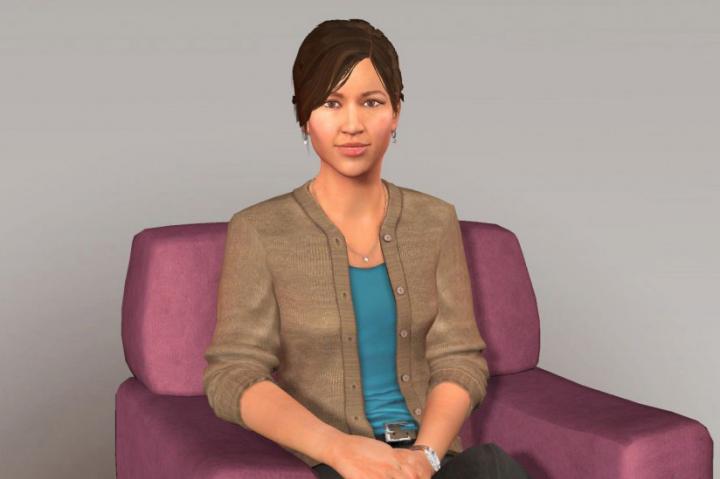Soldiers are more likely to open up about post-traumatic stress when interviewed by a virtual interviewer than by taking a survey, finds a study published today in open-access journal Frontiers in Robotics and AI. A computer-generated ‘human’ interviewer combines the advantages of anonymity with social connection and rapport, which could help soldiers to reveal more about their mental health symptoms.
Soldiers who have experienced combat can develop post-traumatic stress disorder (PTSD), which includes disturbing thoughts, feelings and dreams. The stigma around mental health problems means that troops can be reluctant to admit to symptoms or seek help. “Allowing PTSD to go untreated can potentially have disastrous consequences, including suicide attempts,” says Gale Lucas of the University of Southern California.
Following a tour of duty, the US military assesses the mental health of its troops in a written survey called the Post-Deployment Health Assessment (PDHA), which measures PTSD symptoms. However, the results can affect a soldier’s career prospects in the military. This means they may be reluctant to be completely honest.
Previous studies have shown that people are often more likely to provide sensitive information in anonymous surveys, as they feel safer and less exposed. However, human interviewers can build rapport with interviewees, which isn’t possible in an anonymous survey. When an interviewer forms a social connection with an interviewee, they often open up more easily.
A computer-generated ‘human’ interviewer could provide a solution that combines the rapport-building skills of real human interviewers with the feelings of anonymity and safety provided by anonymous surveys. Such virtual interviewers can use a variety of techniques to build rapport, including a welcoming expression and posture, and being attentive and responsive.
Lucas and her colleagues hypothesized that a virtual interviewer would help soldiers to disclose PTSD symptoms more easily. The research team tested this hypothesis in a group of soldiers following a year-long deployment in Afghanistan.
The troops underwent their official PDHA survey, and then completed an anonymous version by selecting answers on a computer. They also underwent an anonymous interview with a virtual interviewer, who built rapport before asking them questions about common post-traumatic stress symptoms.
Strikingly, the troops revealed significantly more PTSD symptoms to the virtual interviewer than in either of the surveys. The research team repeated the experiment in a larger group of soldiers and veterans, this time comparing only the anonymous PDHA survey and an anonymous interview with a virtual interviewer.
In this second experiment, soldiers and veterans with milder symptoms of post-traumatic stress disorder opened up and disclosed more symptoms to the virtual interviewer compared to the anonymous PDHA survey. This suggests that virtual interviews could help to uncover PTSD symptoms that current interview techniques can’t detect, and help soldiers to access much-needed treatments.
“These kinds of technologies could provide soldiers a safe way to get feedback about their risks for post-traumatic stress disorder,” says Lucas. “By receiving anonymous feedback from a virtual human interviewer that they are at risk for PTSD, they could be encouraged to seek help without having their symptoms flagged on their military record.”
The potential of visual computer technology to collect or impart information is enormous, and researchers are beginning to explore it for a variety of healthcare applications. For instance, in a recent article published in Frontiers in Public Health, researchers trialed an educational demonstration for drug users on tablet computers in a needle exchange clinic. After the demonstration, drug users showed increased knowledge about hepatitis C infections, HIV testing and overdose prevention.
If our reporting has informed or inspired you, please consider making a donation. Every contribution, no matter the size, empowers us to continue delivering accurate, engaging, and trustworthy science and medical news. Independent journalism requires time, effort, and resources—your support ensures we can keep uncovering the stories that matter most to you.
Join us in making knowledge accessible and impactful. Thank you for standing with us!

